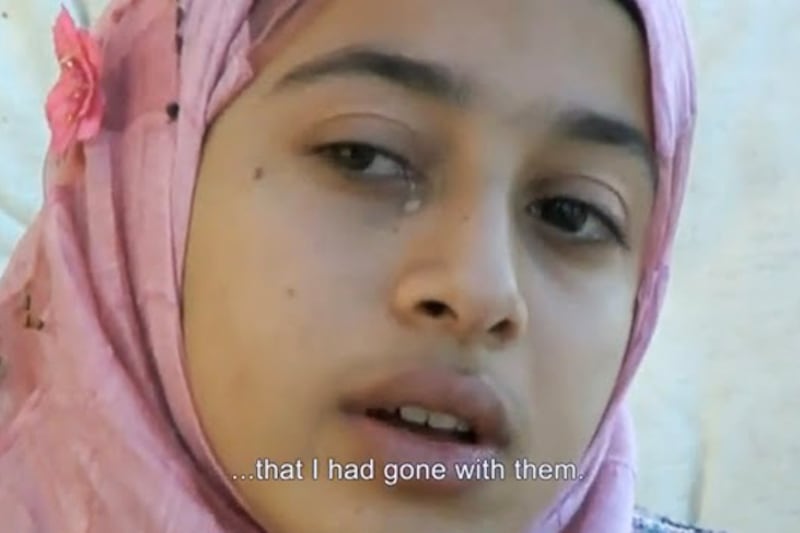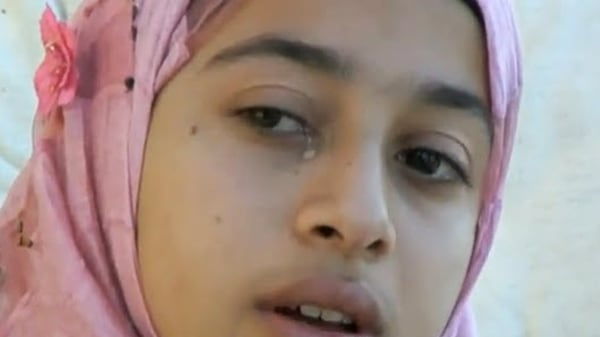For more than 40 years now, Norwegian director Vibeke Løkkeberg has relished being a thorn in the side of authorities. As a leading feminist voice in her country, she offended sensibilities in 1971 with her first short film, Abort, about the need to make abortion free and legal at a time when it was neither. She further ruffled feathers in 1980 with her take on a middle-aged woman’s search for sexual pleasure in The Revelation, which was banned in Norway. And then in 1986 she took on the reliably controversial subject of incest in Vilde (The Wild One).
But never has she caused such an international stir as with her latest documentary, Tears of Gaza, a searing, unflinching look at the devastating 2008-2009 Israeli bombing of the Gaza Strip. The film opened in New York on Wednesday and will open Friday in several other cities.
Nearly 1,500 people died in the campaign, which Palestinians say involved phosphorus bombs and left women and children as half of the casualties. The Israeli government has said the massive strikes were in retaliation for rockets fired from Gaza.
Much of the world’s press were not allowed into the conflict zone. But a few images did creep out and as Løkkeberg watched, stunned and angry in her Norwegian living room, she decided to take action. She got on a plane with her producer husband, Terje Kristiansen, and flew right into it.
“Since I am a woman in film and a writer, I want to use those forms to search for issues that society wants to hide as not important,” said Løkkeberg, a stunning former model with a dramatic mane of curly auburn hair. “That is any artist’s mission. I only live once and so I want to tell what affects me and what is an injustice. I want to be on the side of the victims, not the powerful.”
Kristiansen, who has produced most of her films, smiled naughtily.
“People love to hate her,” he said.
Tears of Gaza is not a conventional war movie in which civilians play a side role to the soldiers’ heroics or failings. Rather, it is seen through the eyes of children whose entire families were wiped out or who were burned or injured from the bombs.

“Children and women have no voice in any war,” said the 67-year-old, who in 1970 turned down a part in Federico Fellini’s Satyricon to launch her own career as a director. “As a mother and woman and grandmother, when I see children suffer, it is very difficult for me not to do something.”
She and Kristiansen flew to Israel but could not get into Gaza. They tried Egypt and still could not get in. So with the help of a Norwegian doctor inside the territory, they were able to find and hire a few Palestinian cameramen and female interviewers to chronicle the stories. Løkkeberg wanted to focus the film on three children, Amira, Razmia, and Yahya, as they retold the nightmare of war in calm detail. She instructed the cameramen to hold the camera on the children, at their level and not to turn away even if they started crying. She instructed them to follow the children, get to know them, take long shots. She scripted the questions. The takes were then smuggled out of Gaza and the photographers kept at it for months. Some footage was shot by civilians on their cellphones as the bombs fell.
They were able to capture an intimacy with the children that is both heartbreaking and reassuring of the strength of the human spirit.
As 11-year-old Razmia says, “Life is hard, really.” And then she collapses in grief and exhaustion, calling out to the heavens, “I’m just a little girl…”
Amira, then a 14-year-old who lost her entire family and suffered a near-fatal injury in the attack, pledges that she will become a lawyer. And in 2009, after the documentary was made, she became the first Palestinian girl to file a war-crimes complaint against Israel in the Hague’s International Criminal Court.
Løkkeberg was heavily influenced by the Italian neo-realist films of the post-war era, which told unsentimental stories of deprivation, hunger, and desperation among people trying to rebuild their lives. She was particularly keen on Vittorio de Sica’s Bicycle Thieves. In war, there is little parents can do to spare their children from horror and Løkkeberg wanted to capture that.
“It’s very important that the public feel close to it, that they feel they go on the street with them, that the experience of the war comes through the celluloid,” she said. “That was the thing that neo-realists did. In American film, you have this distance, this glam.”
And so it is somewhat surprising that the film did find an American distributor. Larry Rattner, known for producing indie films about serial killers, including Dahmer and Gacy, decided to distribute the movie through his documentary-distribution company, Choices. Rattner was introduced to the filmmakers through a mutual friend last year and when he saw Tears of Gaza, he thought it would be a worthwhile challenge.
“It’s a very good film, but also very hard in terms of marketing,” said Rattner. “We are a very small company and because we are small we can take chances. For me, these are the kinds of films that I should pick up.”
Needless to say, many in Israel were not pleased. Some have welcomed the film as a good discussion point and it received good reviews at the Jerusalem Film Festival, but attempts were made by Israeli officials to have the documentary banned in Norway and Sweden. Løkkeberg and Kristiansen were not fazed.
“This is not a film against Jews. It’s a film against war,” said Kristiansen, adding that the advent of iPhones and videocameras have made it nearly impossible to hide wars anymore. “Some people said this is not showing both sides. There are not two sides seen from a child. There is just one side.”
They have not stayed in touch with the children—due mainly to the difficulties of getting communication in and out of Gaza, they said. But they do hope the film has catalyzed the children to get an education. If the war changed their lives permanently, Løkkeberg hopes it’s not all for the worse.
“You can see that they are not children anymore,” said Løkkeberg. “Making this changed my life, too. I had illusions that are now gone. But I would like this film to create a peace movement where we don’t solve political problems with weapons; where instead we talk to each other.”





